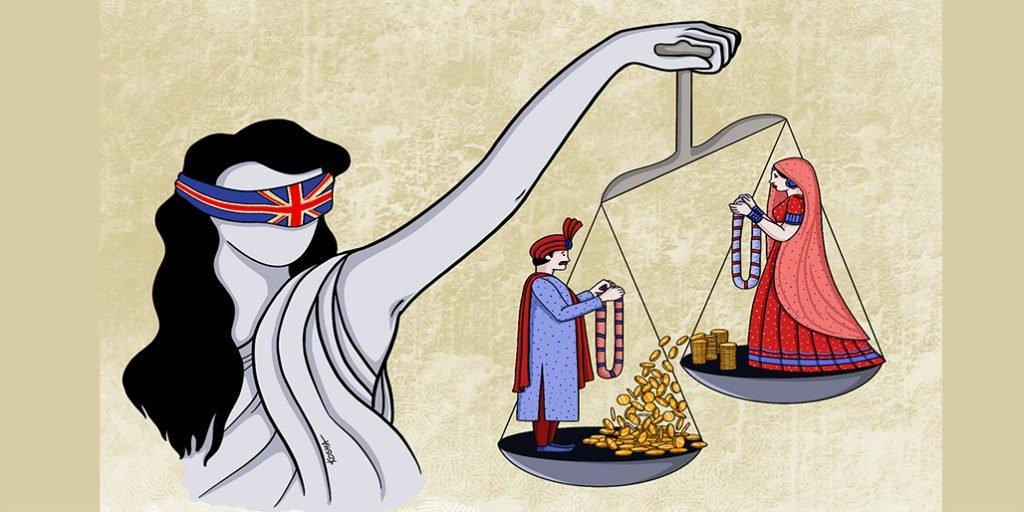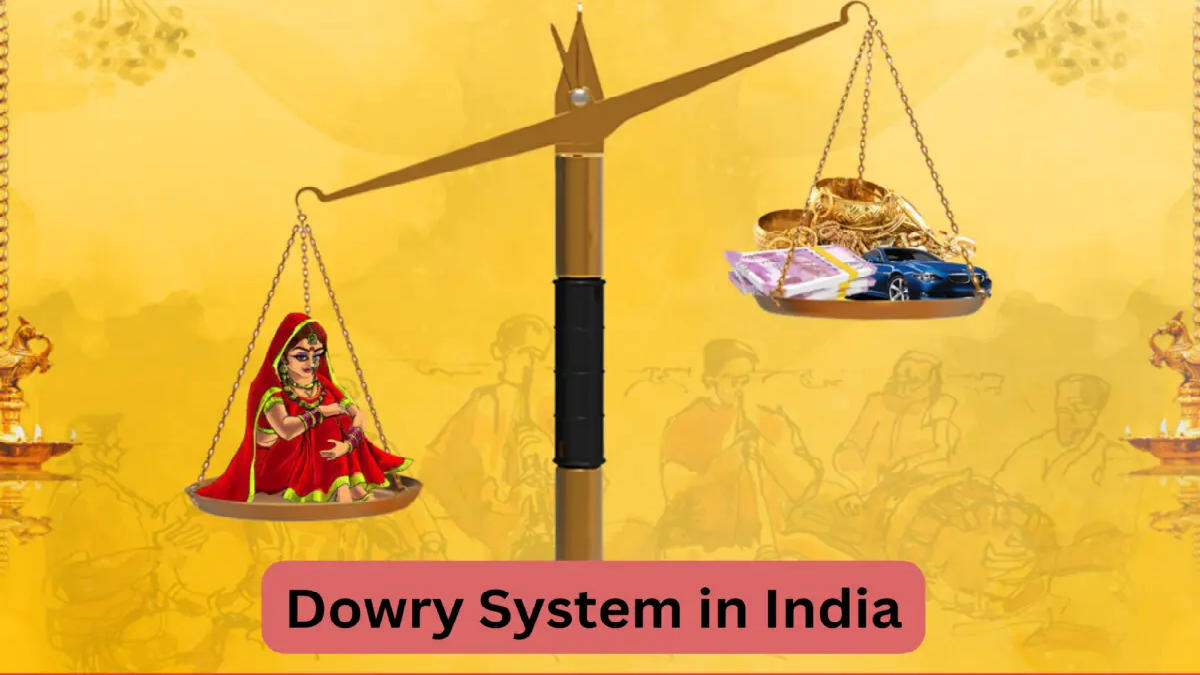Table of Contents
The Dowry System, originating from historical practices intended to provide financial security, involves the bride’s family offering significant gifts or wealth to the groom’s family at the time of marriage. This system often leads to exploitation, reinforcing the notion that a woman’s worth is tied to material wealth, and can even result in violence or abuse when dowry expectations are not met. To combat these issues, various initiatives are underway, including legal reforms and campaigns aimed at shifting societal attitudes.
Legal measures in many countries have sought to curb the demand for dowries, and public awareness campaigns are striving to change the cultural mindset that perpetuates this practice. By addressing the root causes and encouraging a more equitable view of gender roles in marriage, these efforts aim to dismantle the dowry system and promote gender equality, ensuring that marriages are based on mutual respect rather than financial transactions.
What is Dowry System?
Dowry System in India
- Historically, the dowry system was absent from Indian culture.
- Initially, giving a dowry was seen as a symbol of female empowerment, enabling women to contribute property and wealth to their marriages.
- Over time, this practice has become corrupted and is now associated with exploitation and abuse.
- The dowry system has given rise to various social problems in India like cruelty in Marriage, including domestic violence, bride burning, and female infanticide.
- Women are often considered a financial burden on their families, with the dowry tradition reinforcing this perception.
- Consequently, families have developed a preference for sons over daughters, leading to an imbalanced gender ratio in the country.
- The dowry system economically exploits the bride’s family, with excessive dowries demanded by the groom’s family, causing financial distress.
- Many families find themselves in debt, resorting to loans or selling property to meet these demands.
Dowry System in India: The Social Evil
The dowry system in India remains a deeply ingrained social challenge persisting across generations. This practice compels the bride’s family to provide gifts, money, or assets to the groom’s family as a condition for marriage. Despite sustained efforts to confront this harmful tradition, the dowry system continues to cast a shadow over Indian society, particularly in rural areas.
This article explores the roots of the dowry system, its negative repercussions, and the ongoing endeavors to eliminate this detrimental practice. Join us as we navigate the complexities of this age-old issue and shed light on potential solutions to promote a more just and equitable society in India.
History of the Dowry System in India
The dowry system in India has a long and fascinating history. Originally, it was meant to provide financial security for brides as they joined their new families. Over time, however, the practice changed due to cultural and societal shifts that altered its meaning.
origins of the dowry system and its evolution throughout different historical periods, highlighting its role in Indian society. Join us as we uncover the key changes that have shaped the dowry system into what it is today.
Origin of Dowry System in India
- Ancient Roots: The practice of dowry can be traced back to ancient Hindu scriptures, known as the Vedas, where it was initially mentioned as gifts and payments to be given to the bride’s family during marriage.
- Financial Security: In its early days, the dowry system had noble intentions. It aimed to provide financial security to women who couldn’t inherit property and relied on their husbands for support.
- Changing Norms: As societal norms evolved, the dowry system began to transform. Women started to be viewed as financial burdens on their families, and dowries were seen as a means to offset this perceived cost.
- Patriarchal Influence: The dowry system’s transformation took a sinister turn with the rise of patriarchy. Women became increasingly vulnerable to financial exploitation, and dowries became a way to secure a groom for daughters.
- Extreme Demands: In some instances, the demand for dowry became extreme, pressuring families to take out loans or sell property to meet the groom’s expectations.
Dowry System in India During British Colonialism
- In the 19th century, British colonialism further exacerbated the dowry system.
- The British introduced laws that recognized the rights of women to inherit property and made it illegal for husbands to take their wive’s property without their consent.
- However, these laws also gave rise to the notion that women’s property rights should be compensated for with dowry payments.
- The dowry system continued to grow in prominence in the 20th century, and in some cases, it became a major source of tension between families.
- In the 1960s and 70s, the Indian government attempted to address the problem by passing laws that made it illegal to demand dowry, but these laws have been difficult to enforce.

The dowry system remains a highly debated topic in contemporary India. While some families regard it as a vital aspect of marriage, others perceive it as a form of gender-based exploitation and discrimination against women. Activists persist in their efforts to campaign against this practice, and there have been indications of limited progress in recent years.
However, the dowry system remains deeply ingrained in Indian culture, necessitating a collective and sustained endeavour by society at large to bring about change.
Dowry System, Causes, Effects, and Solutions
The dowry system, prevalent in many parts of the world, is a practice with deep-rooted causes, far-reaching effects, and complex solutions. Let’s explore these aspects:
Causes of Dowry System
The dowry system in India persists due to a complex interplay of factors deeply embedded in societal norms and traditions. Stemming from the patriarchal structure of Indian society, where women are often seen as burdens and men as breadwinners, dowry is viewed as a form of compensation for marrying off daughters.
| Causes of Dowry System | |
| Customs and Traditions | 1) The majority of dowry-related cases stem from adherence to traditional customs upheld by Indian society. 2) People often feel obligated to follow these customs, even if they find them uncomfortable. |
| Social Structure | 1) Indian society is predominantly patriarchal, perpetuating the dowry system where women are seen as burdens and dowry as compensation. 2) Sons are considered superior and breadwinners, leading families to demand dowry for them. |
| Fear of Ill-Treatment | Families may give dowry out of fear of ill-treatment of their daughters by in-laws, believing it ensures security and non-discrimination. |
| Societal Pressure | Status is often measured by the amount spent on daughters’ marriages, leading to pressure to give substantial dowries. |
Dowry System Effects
- Gender Discrimination: The dowry system perpetuates gender inequality, reinforcing the idea that women are a financial burden on their families.
- Violence and Abuse: It can lead to domestic violence, harassment, and even dowry-related deaths, as brides are often subjected to demands for more dowry after marriage.
- Financial Burden: The practice places an enormous financial burden on the bride’s family, leading to debt and sometimes impoverishment.
- Skewed Gender Ratio: The preference for male children due to dowry-related expenses can result in a skewed gender ratio.
Solutions for Dowry System
- Legal Reforms: Strict enforcement of laws such as the Dowry Prohibition Act and Section 498A of the Indian Penal Code to punish those demanding dowry and perpetrating dowry-related harassment.
- Educational Initiatives: Promote education and awareness campaigns to change societal mindsets and encourage gender equality.
- Economic Empowerment: Empower women with economic opportunities to reduce their dependence on dowry as a means of financial security.
- Community Involvement: Encourage communities to take a stand against the dowry system and support couples who opt for simple and meaningful marriages.
- Support Services: Establish support services for victims of dowry-related abuse, including counselling and legal aid.
- Media and Entertainment: Engage media and entertainment to depict and promote positive, dowry-free marriages as a societal norm.
The dowry system is a complex issue that requires a multi-faceted approach to address its root causes and mitigate its detrimental effects. Through legal reforms, education, and changing societal norms, progress can be made toward eliminating this harmful practice and fostering a more equitable and just society.
Combating the Dowry System in India
- To combat the dowry system, several laws have been enacted in India. The Dowry Prohibition Act of 1961 makes it illegal to demand dowry in any form.
- However, despite these laws, the practice continues to be widespread. The root of the problem lies in the social and cultural attitudes toward women in Indian society.
- Until these attitudes change, it will be difficult to eradicate the dowry system.
- Education and awareness are crucial in addressing the problem of dowry.
- Women must be educated and empowered to stand up for their rights and refuse to accept the practice.
- Families must be taught to value their daughters as much as their sons and to understand that marriage is a partnership between equals, not a transaction.
Laws against the Dowry System in India

Dowry Prohibition Act, 1961
In India, the dowry system has been outlawed under the Dowry Prohibition Act 1961. The act was passed to prevent the practice of dowry, which was becoming a severe social issue in the country. The act defines dowry as any property or valuable security given or agreed to be given either directly or indirectly, at or before or after the marriage as consideration for the marriage.
The act criminalizes giving or taking dowry and imposes penalties, including up to five years in prison, a Rs. 15,000 fine, or both. It requires the groom and his family to report any dowry demand by the bride’s family to the authorities. The law also protects women from dowry-related harassment, allowing them to file complaints with the police or magistrate, who must investigate and take necessary action. In cases where a woman dies within seven years of marriage due to dowry-related cruelty or harassment, it’s considered a dowry death, and the offender can face a minimum seven-year prison term.
Dowry System UPSC
In the context of the UPSC General Studies Paper 1, the dowry system is a significant topic falling under the salient features of Indian society, the diversity of India, and the role of women and women’s organizations. This system, deeply entrenched in Indian culture, reflects complex societal norms and practices. It underscores the patriarchal structure of Indian society, where women are often perceived as burdens on families.
Domestic Violence Act of 2005
Apart from the Dowry Prohibition Act, several other laws offer protection to women against the dowry system. The Domestic Violence Act 2005 safeguards women facing domestic violence, including dowry-related harassment, by enabling them to seek court protection and restraining orders against their husbands or in-laws.
The Indian Penal Code also provides a defence against the dowry system. Section 498A of the IPC addresses cruelty by husbands or their family members, making it a punishable offence to subject women to cruelty, including dowry harassment. Despite the existence of these laws, the dowry system persists in India due to its deep cultural roots, necessitating a collective effort from society to eliminate it. The government must take strict action against those demanding dowry or harassing women for it, while society should shift its focus from extravagant weddings to promoting simpler, more meaningful marriages.
| Related Articles | |
| Supreme Court Upholds Abrogation of Article 370 | |
| Animal Rights in India | |



 TSPSC Group 1 Question Paper 2024, Downl...
TSPSC Group 1 Question Paper 2024, Downl...
 TSPSC Group 1 Answer key 2024 Out, Downl...
TSPSC Group 1 Answer key 2024 Out, Downl...
 UPSC Prelims 2024 Question Paper, Downlo...
UPSC Prelims 2024 Question Paper, Downlo...
